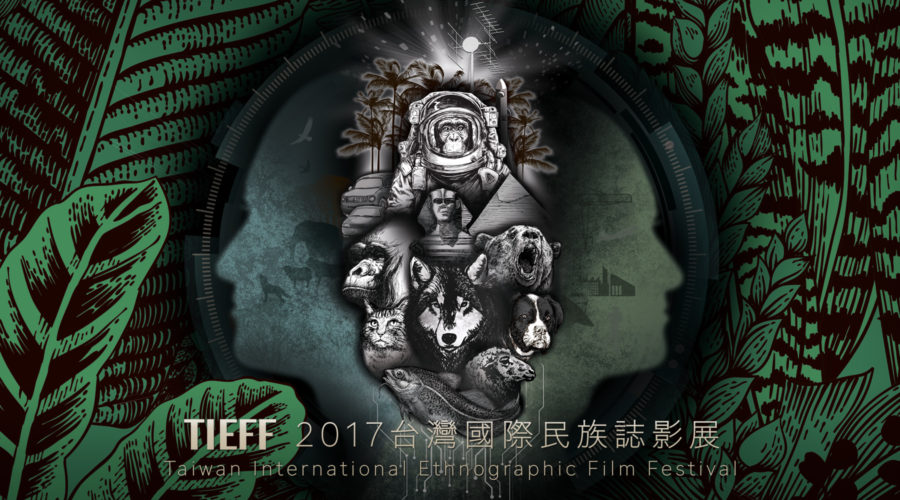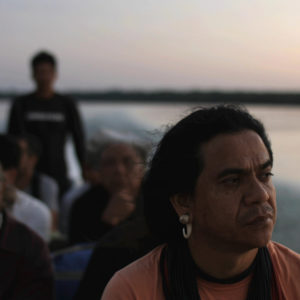Dr. Teri J. Silvio
Institute of Ethnology Academia Sinica
“When I’m here, I miss there; when I’m there I miss here.”
The Third Shore is a fascinating film in which the relationships among culture, history, and personal identity are explored. Concrete objects take on layers of significance, and the answer to each question reveals a deeper mystery. It deals directly with the issue of relations between indigenous peoples and settlers in the Amazon, but the characters’ alienation and moments of connection probably resonate with culturally displaced viewers everywhere.
The film gives us glimpses into two men who cross between settler and indigenous cultures from opposite directions. Director Fabian Remy is first fascinated when he comes across the story of João da Luz, the child of one of the first settler families in the region who was captured in 1945, at the age of 10, in a raid by a group of Kayapó. He was taken back to the Kayapó village, where he was adopted into a chief’s family, given a new name, Kramura, and taught Kayapó language and customs. Then, when he was 18, the Villas-Bȏas brothers found him during one of their reconnaissance trips up the Xingu River, and returned him to his biological sister and brother-in-law in the settler community. When Remy tried to find João/Kramura to interview him in 2005, he was too late – João/Kramura had died just a few months before Remy located his relatives. Years later, Remy is still captivated by this story, and sets off again to trace the history of João/Kramura, this time with a companion, his friend Thini-á. Thini-á is a member of the Fulni-ȏ tribe, but left his village at the age of 15, and has lived mostly in large cities ever since.
“The more you discover things, the more you know, the more you suffer.”
As Remy and Thini-á interview João/Kramura’s two sets of remaining kin, the life that we glimpse is rarely a happy one. His Kayapó family takes them to João’s grave and recall his initiation ceremony. His settler family removed his lip plug, but say that he never really learned Portuguese, that he always missed the Kayapó. His Kayapó friends would travel hundreds of kilometers to visit him, and he would leave with them for weeks.
Remy and Thini-á’s last stop is the frontier town of Sao José, a city that grew up on the border of the Xingu reservation area and the white settlements, where João/Kramura spent much of his later life. The people there remember him, he would come and work on the ferry until he had enough money to buy tobacco and other goods, and then go back to the Kayapó for a while. Before they leave, Remy and Thini-á are able to locate his Brazilian ID, acquired late in life, and we see João’s face for the first time. But the formal ID reveals very little about the man, except for the dates of his birth and death.
If João remains mysterious because he is dead and his story can only be approached through the memories of others, Thini-á remains mysterious too. The emotional trajectory of João/Kramura’s story is revealed largely through the point of view of Thini-á (the director does not appear in the film, and the narrative he provides in voice-overs is primarily factual). Thini-á is a taciturn man, but when he speaks he is insightful, and his silences are eloquent themselves. His life is full of contradictions. He works teaching about indigenous culture in schools in Rio, yet he has not been back to his village to participate in the Ouricuri ritual for ten years. His uncles were killed by Portuguese ranchers, yet he sings Portuguese folk songs about the trials of being a rancher with feeling. He says he saw emotional closeness in the crowded urban apartment buildings of Brasilia; he sees sadness in the faces at a dance party. When questioned about these contradictions, he simply says, “My path is not your path.”
The film ends with the image of Thini-á on the ferry across the Xingu, the same route on which João/Kramura worked, which Remy sees as an obvious symbol for the lives of both men, shuttling between indigenous and settler cultures. Thini-á has decided to go back to his village to participate in the Ouricuri ritual for the first time in over ten years. Remy asks if he can film it, Thini-á says no.
The indigenous people of the Amazon have long been an object of study by anthropologists, and they have been particularly important in the recent “ontological turn” in anthropology. This film is particularly interesting because it offers both an exploration and a critique of the idea that the worlds of indigenous people and settlers are incommensurable. On the one hand, we see that for many indigenous people today, it is impossible to live in a purely indigenous world. Border-crossing is not only possible but often necessary, both practically and emotionally. On the other hand, it is clear that much of the suffering that both João/Kramura and Thini-á feel comes from their experience of incommensurability. The Third Shore does not try, as many ethnographic films do, to approach indigenous worldviews through the recording of ritual, or, as other ethnographic films do, to focus on the conflict between indigenous and settler worlds in terms of the political struggles of indigenous communities. It does not really spend much time on the content of Kayapó or Fulni-ȏ beliefs. Rather, it tries to show us the emotional and epistemological consequences of living between different worlds. Thini-á’s final refusal may not only be a demand that the sacred and secret nature of the ritual be respected. It may also be a demand that we acknowledge that the world constructed through ritual, and the part of himself that lives in that world, may not be graspable through the mediation of ethnographic film.

